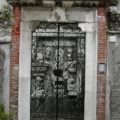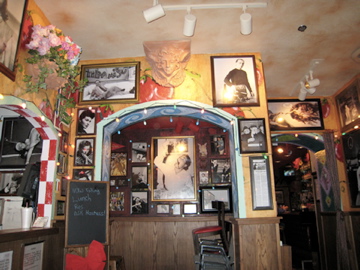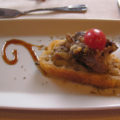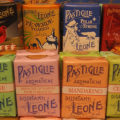^ above: a selection of chutneys (coconut, tomato, coriander, ?) with crunchy fried things to dip in them. Delicious as these are, don’t fill up – there’s a lot more food coming!
While in Delhi I spent a morning working at Sun’s office, which is such a hive of activity that desks are at a premium! Then Ritu, a colleague, accompanied Ross and me to lunch at Dakshin, a restaurant in the Marriott Hotel in the Saket area of south Delhi.
Dakshin means “south” in Hindi, and the restaurant features premium versions of the foods of south India, in a beautiful setting with excellent service.
We ordered the vegetarian thali, a traditional Indian style of meal which works very well as a tasting menu. This began with rasam, a traditional accompaniment to every south Indian meal: a thin, spicy soup served (in this case) in gorgeous heavy brass bowls.
I don’t have a lot of experience with south Indian food, but this was the best rasam I’ve yet tasted – a rich, aromatic broth, probably less hot than real south Indian norms in deference to the tastes of foreigners (and, for that matter, north Indians – real southern cooking is too spicy for many north Indians).
After that the main meal arrived: the thali is the large, round tray, in this case with a banana leaf perfectly cut to fit inside, with little bowls of goodies arranged around the rim.
From bottom center, going clockwise: tamarind rice, plain rice, lentils, a curry made from gram flour and coconut milk, potatoes, dal (lentils) with spinach, coconut curry with vegetables, something veggie which I couldn’t identify but liked, raita (yogurt). This menu will change according to season and what the chef finds in the market that day.
In other thalis, you might leave the space at the center free for a mound of rice, so that you have room to mix it with the dal and other goodies.
In this case, the center is occupied by appam, a bread made from rice flour and coconut milk – spongy on one side, crispy on the other, light, fluffy, delicately flavored, and thoroughly yummy! South Indian cuisine features many variations on breads made from rice flour, such as dosa and idli.
All in all a very wonderful meal, even though Rs. 1000 or so per head is extravagant by local standards – prices have gone up shockingly in Delhi, especially against the weak dollar.

















